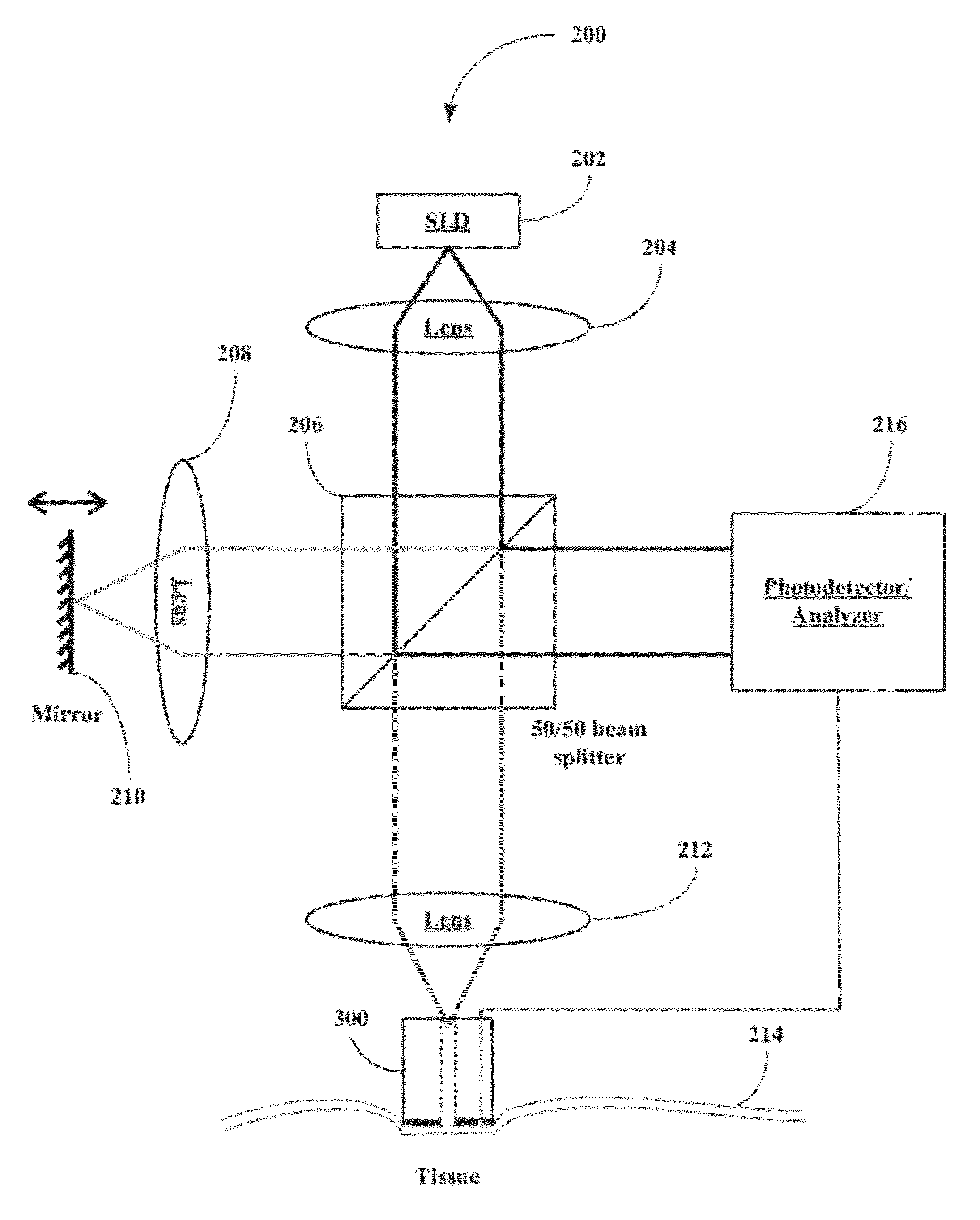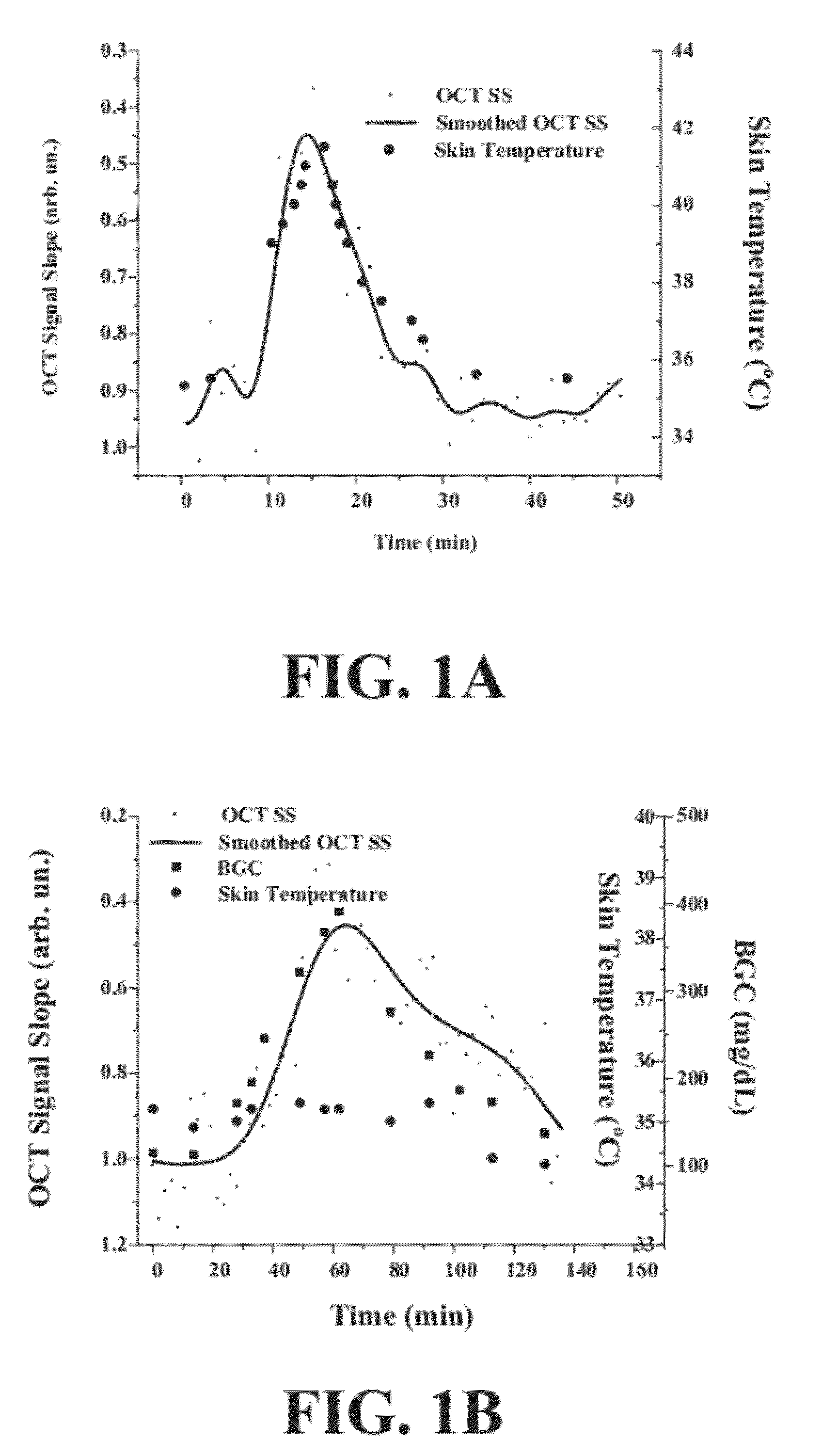Noninvasive, Accurate Glucose Monitoring with OCT By Using Tissue Warming and Temperature Control
a tissue warming and temperature control technology, applied in the field of noninvasive, accurate glucose monitoring with oct by using tissue warming and temperature control, can solve the problems of inability to monitor and monitor with temperature and/or pressure control for high accuracy, no suitable noninvasive device available, and difficulty in achieving continuous monitoring and monitoring with oct. , to achieve the effect of improving contrast, enhancing glucose specificity, and efficient removal
- Summary
- Abstract
- Description
- Claims
- Application Information
AI Technical Summary
Benefits of technology
Problems solved by technology
Method used
Image
Examples
Embodiment Construction
[0047]The inventors have developed a novel optical coherence tomography (OCT) technique for noninvasive, continuous glucose monitoring based on interferometric measurement and analysis of low-coherent light backscattered from specific layers of tissues under temperature controlled conditions. The inventors demonstrated that the accuracy and reproducibility of noninvasive glucose monitoring is dependent on tissue temperature. The inventors have shown that temperature variation of less than 1° C. do not worsen accuracy of glucose monitoring, but temperature variation of more than 1° C. results in changes of the OCT signal. The inventors have demonstrated that temperature variations of more than 1° C. substantially worsen accuracy of glucose monitoring in animals including humans and, therefore, may substantially worsen accuracy of glucose monitoring in non-diabetic and diabetic patients. The inventors have found that tissue temperature control can be used to minimize adverse temperatu...
PUM
 Login to View More
Login to View More Abstract
Description
Claims
Application Information
 Login to View More
Login to View More - R&D
- Intellectual Property
- Life Sciences
- Materials
- Tech Scout
- Unparalleled Data Quality
- Higher Quality Content
- 60% Fewer Hallucinations
Browse by: Latest US Patents, China's latest patents, Technical Efficacy Thesaurus, Application Domain, Technology Topic, Popular Technical Reports.
© 2025 PatSnap. All rights reserved.Legal|Privacy policy|Modern Slavery Act Transparency Statement|Sitemap|About US| Contact US: help@patsnap.com



